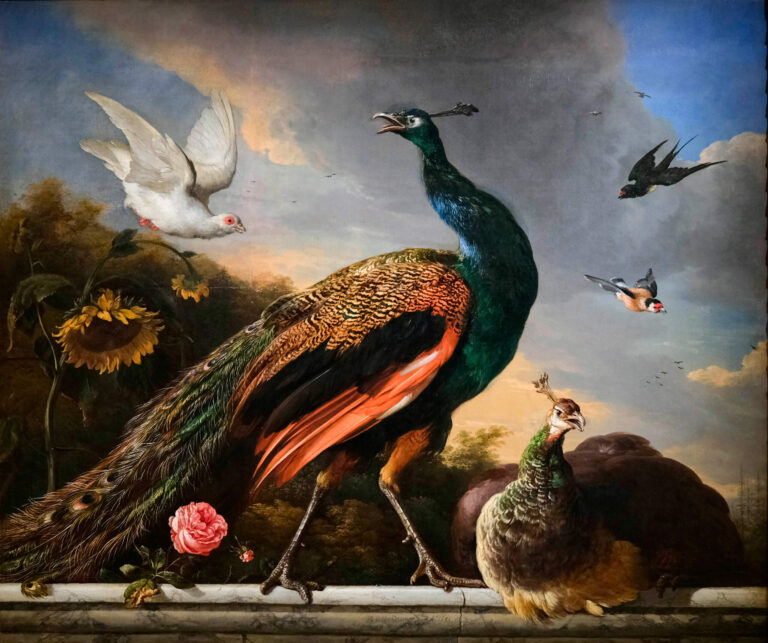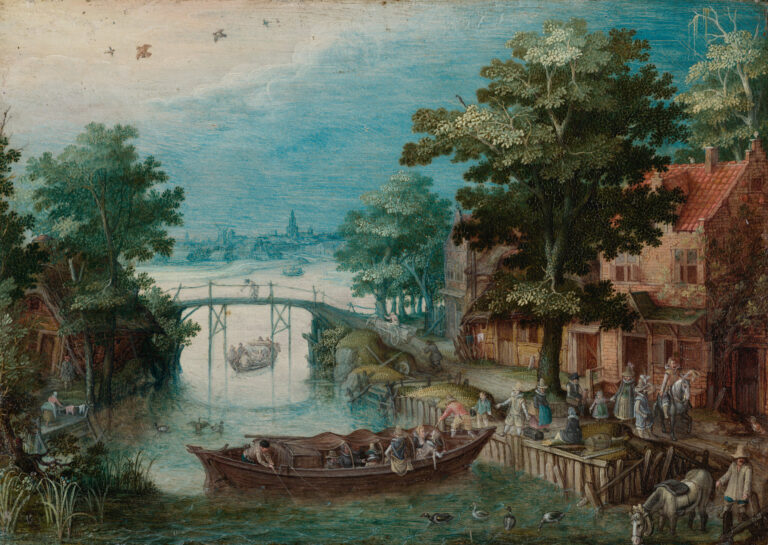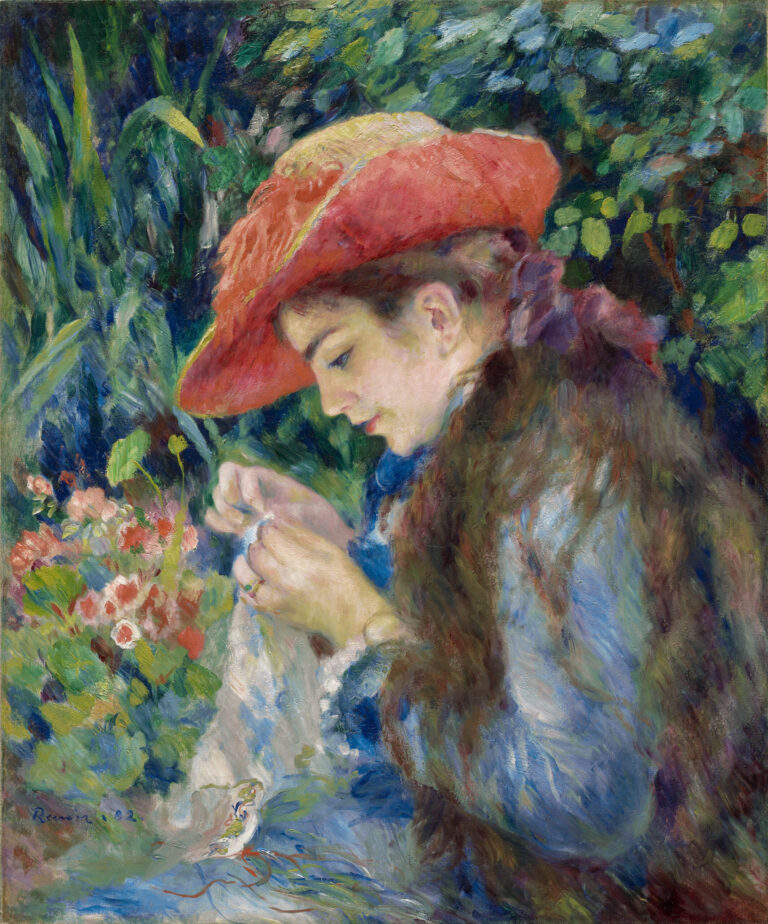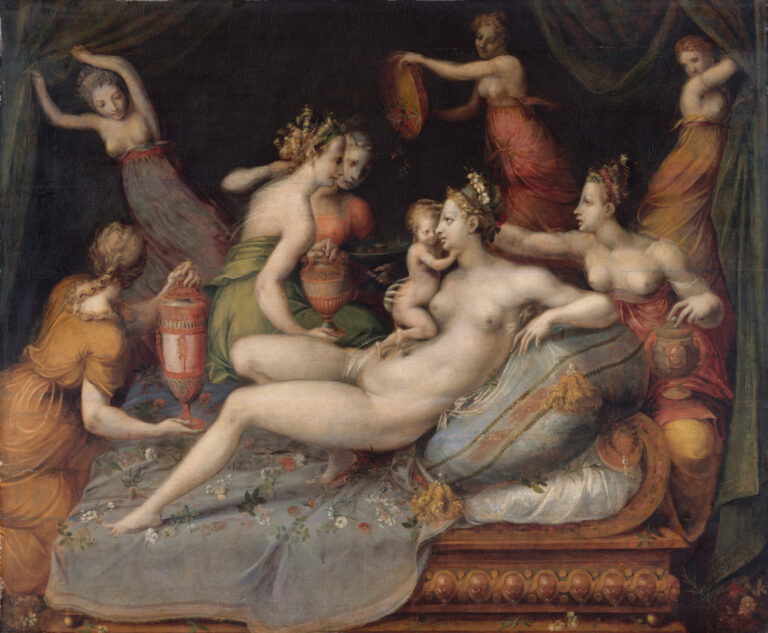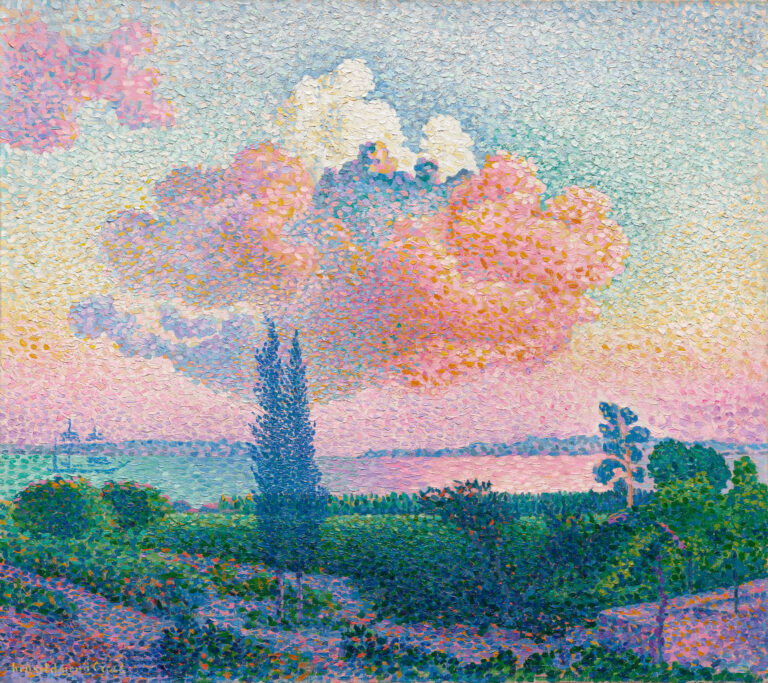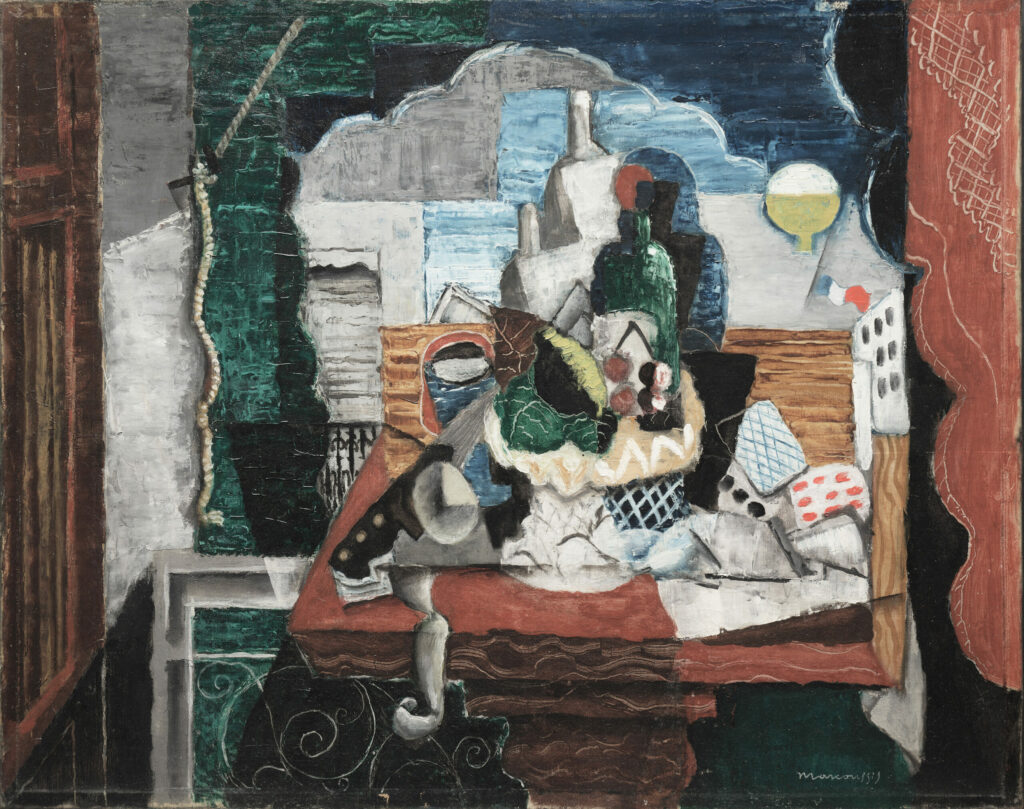
Night Café (c. 1923) by Louis Marcoussis perfectly illustrates the evolution of synthetic cubism in the 1920s.
This complex composition deconstructs the traditional space of the Parisian café according to cubist principles: intersecting geometric planes, multiple perspectives, fragmentation of objects. The artist orchestrates a chromatic symphony dominated by deep greens, warm ochres, and nocturnal blues, evoking the atmosphere of nighttime establishments. The characteristic elements—bottles, glasses, playing cards—are transformed into geometric forms while retaining their identity. The collage technique, inherited from analytical cubism, enriches the pictorial surface. This work demonstrates Marcoussis’s stylistic maturity as he, while respecting the legacy of Picasso and Braque, develops a personal plastic language that is more colorful and decorative, characteristic of interwar cubism.
Further Information
- Night Café, c. 1923, by Louis Marcoussis
- 70.5 x 88.1 cm (27 3/4 x 34 11/16 in.), oil on canvas
- Cleveland Museum of Art
- https://www.clevelandart.org/art/2006.139
Louis Marcoussis (1878-1941), born Louis Casimir Ladislas Markus in Warsaw, embodied the cosmopolitan École de Paris of the early 20th century. Settling in the French capital in 1903, he adopted his pseudonym on the advice of Guillaume Apollinaire, after the village of Marcoussis south of Paris. Initially trained in a post-impressionist style, he discovered cubism around 1910 and quickly became one of its most refined representatives. Close to literary and artistic avant-gardes, friend of Apollinaire, Max Jacob, and Jean Cocteau, he frequented Montmartre and then Montparnasse. His cubism, more lyrical and colorful than that of the movement’s masters, reveals a Slavic sensibility tinged with Parisian elegance. An accomplished engraver, he also contributed to the renewal of modern graphic art.

